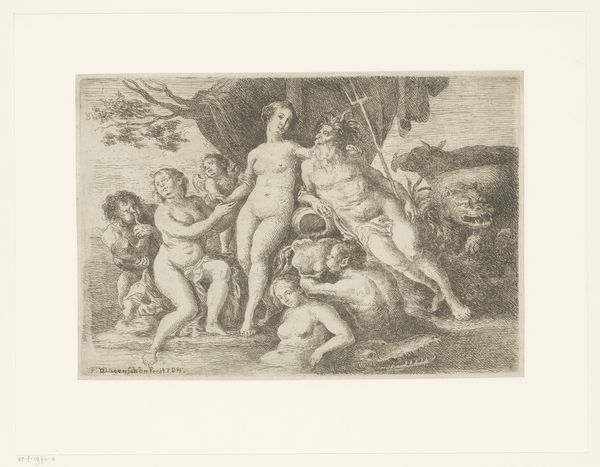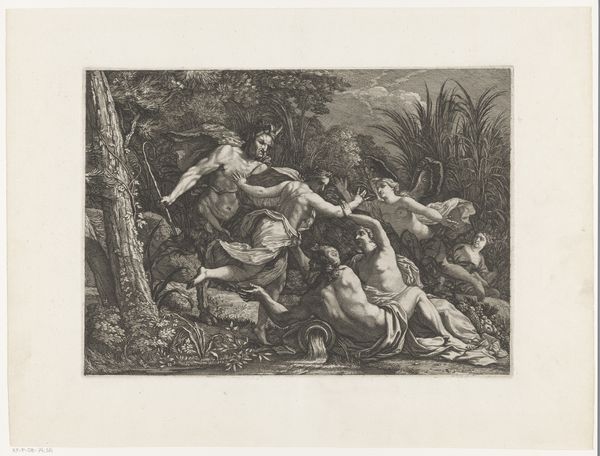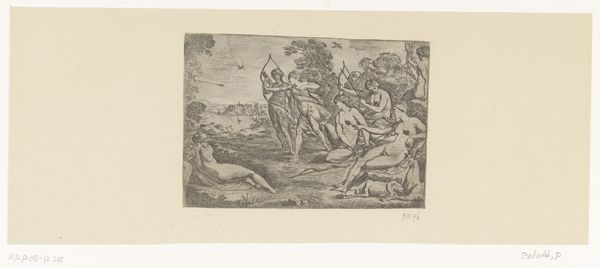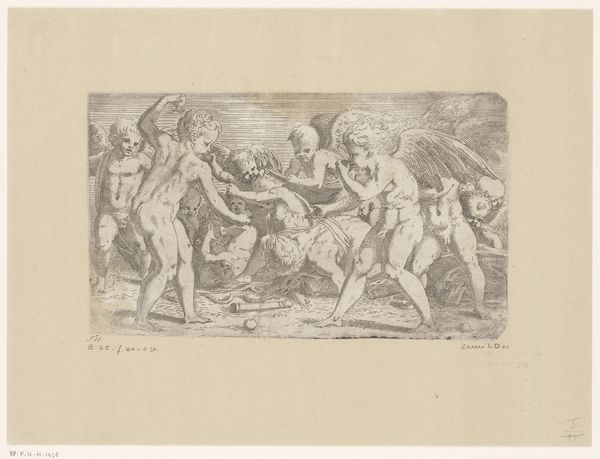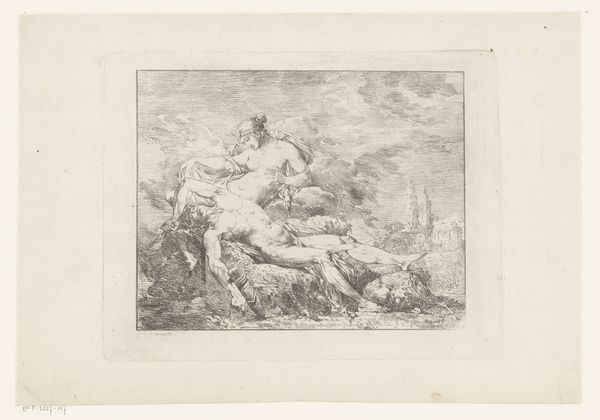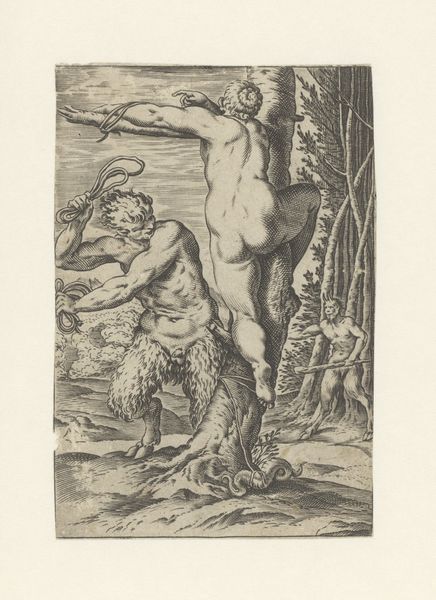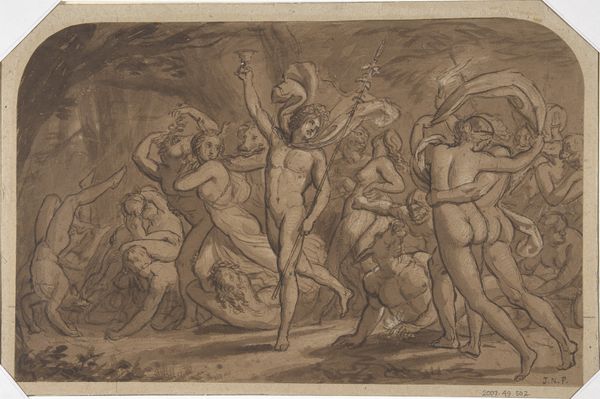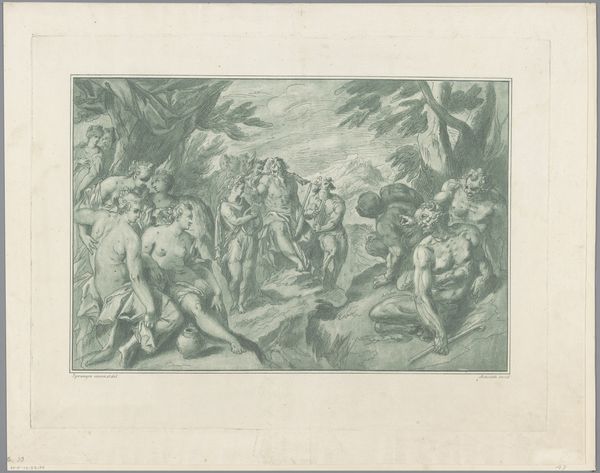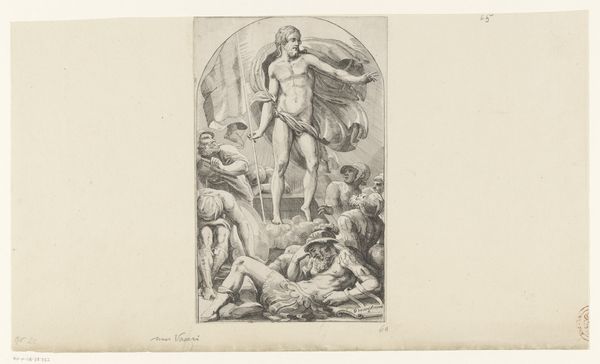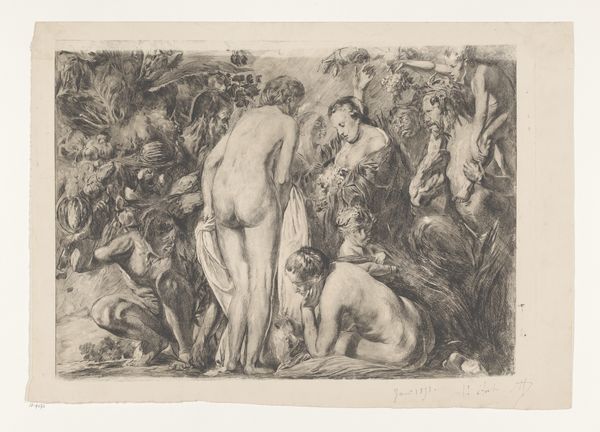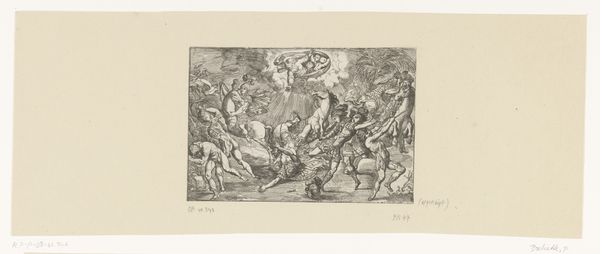
print, engraving
#
allegory
# print
#
old engraving style
#
mannerism
#
figuration
#
11_renaissance
#
personal sketchbook
#
nude
#
engraving
Dimensions: height 188 mm, width 286 mm
Copyright: Rijks Museum: Open Domain
Editor: Here we have "Spelende Putti," or "Playing Putti," an engraving from around 1530 to 1560 by the Master of the Die. It depicts a gaggle of winged cherubs, some playful, others seemingly in conflict. It's busy! What catches your eye when you look at this print? Curator: Immediately, I'm drawn to the dynamic arrangement of figures within a relatively shallow picture plane. Note how the artist utilizes almost every square inch of the composition. How does the arrangement of figures contribute to the overall effect? Editor: Well, it definitely creates a sense of liveliness, but almost to the point of being chaotic. I suppose that's part of the Mannerist style? Curator: Precisely. The artist rejects the High Renaissance ideals of balance and clarity. Look at the contorted poses, the ambiguous spatial relationships. It is not so much what they’re doing, but *how* they’re doing it, wouldn’t you agree? The focus is on the display of artistic virtuosity, or 'sprezzatura' – a certain studied carelessness. Editor: That makes sense. I see how the artist uses the figures themselves to create the dynamism. Are there particular compositional techniques at play here that amplify the sense of movement? Curator: Notice the repetition of curved lines—in the wings, limbs, and even the landscape—creates a rhythmic flow throughout the composition. Also, consider the strategic use of light and shadow to accentuate certain forms and create a sense of depth. How do you think these formal elements contribute to the expressive qualities of the print? Editor: I hadn’t thought about it in terms of *that* depth before. I guess the dark lines give a more pronounced dimensionality to the foregrounded putti and create a more unified viewing experience. It helps rein in that chaos I mentioned earlier! Curator: An insightful observation. It shows the interplay between the decorative and expressive functions of form itself. What did you make of our analysis? Editor: Thinking about this piece through its formal structure is insightful, especially regarding composition, rhythm, and shading. It's almost like peeling away layers to find the artistry that fuels the organized chaos of this image!
Comments
No comments
Be the first to comment and join the conversation on the ultimate creative platform.
